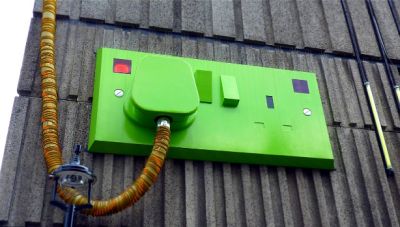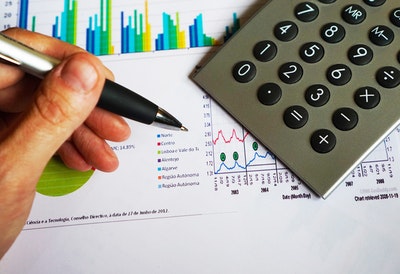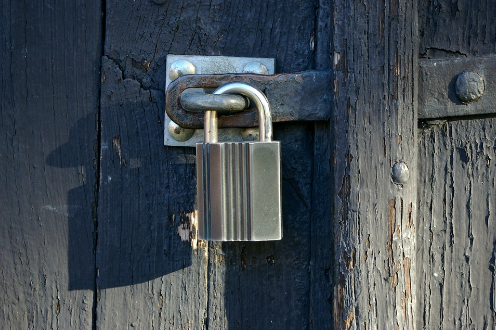6 Financial Myths Behind Going Green For Small Businesses

It’s common knowledge that businesses can dramatically affect the environment. Indeed, business decisions that relate to the choice of material, the production methods, the office structure, the transportation of goods and people, as well as the communication solutions in place can change the quality of the air, soil, and lifestyle all over the planet.
The truth is that the business decisions of the past have created the issues of today. It’s therefore essential to train businesses and governmental institutions to accept and embrace their green responsibility. Nowadays, we can’t afford to pursue business strategies that don’t put the environment first.
As a consequence, tutorials, guidelines, and how-to articles about the advantages of going green have taken over the Internet. Businesses owners are told about the financial benefits they can gain from environmentally-friendly approaches, claiming that there are substantial savings ahead.
On the other hand, the same businesses are also warned about the hidden costs of going green, encouraging small companies to think twice about their eco-friendly purchases. The bottom line is that nobody nowadays knows anymore whether embracing a green strategy is affordable or too expensive for the company.
Failure to find out can push businesses to adopt a self-destructive strategy without even knowing it. Therefore it’s time once and for all to address the most popular financial myths about eco-friendly decisions.
#1 You can’t generate all your energy through solar panels
When you think of environmentally friendly upgrades, solar panels are a popular suggestion. They come right on top of the list of modern tech additions that a business should consider. In reality, solar panels are not always a valuable option.
More often than not, businesses and individuals should stay away from solar installations for fear of unnecessary expenses. Indeed, you need to take a variety of factors into account, from your current electric expenses to your geographic location.
Sun exposure is, of course, a major element, as it’s fair to say that an area with little to none direct sunlight would not benefit from the addition of solar panels. However, the costs of kilowatt per hour vary hugely across the country, meaning that in numerous cases, it’s cheaper to skip solar panels altogether.
Small businesses, however, are often lured into a contract with attractive installation costs and the promise of self-sufficiency. In reality, you will need to cover a vast area in solar panel to permanently replace your energy supplier, which is not an option for small companies. Additionally, the gains from solar implementation may not be high enough to justify the investment in the first place.
Companies will find that insulation investments are a cost-effective green alternative that can actively reduce energy production and consumption.
#2 Green equipment is too expensive
While you can buy an energy-efficient kettle for the office kitchen without breaking the bank, when it comes to investing in green professional equipment, it’s another kettle (of fish). Indeed, machinery that relies on electric engines instead of being fuel-powered, and equipment that is designed to produce less waste are the result of innovative technological solutions.
For a small business budget, this can be summed up in two words: Too expensive. However, there are ways around it. First of all, small companies can benefit from tax deductions to support their equipment upgrade, which can help to manage high purchase costs.
Additionally, you can also look for used equipment instead, from online auctions – you can browse auction details here for the construction and agriculture sectors, for instance – or warehouse sales from other companies. The advantage of second-hand items is that they are significantly cheaper.
But, buying old means that you extend the life of each piece of equipment, actively reducing the carbon footprint linked to the production of new items.

#3 Going paperless saves tons of money
It’s the motto of all modern office: Going paperless is the way to go in the future. However, going paperless is not as green and cost-friendly as you might expect.
Indeed, for a start, your team is forced to rely entirely on digital devices, which increases the demand for electricity and lithium batteries – one of the most toxic types of batteries. However, as there is no other way to operate computers, you need to accept for this exercise that saving the trees is what is going to kill the forest in the long term.
Additionally, your team is likely to register a drop in productivity. Most people choose to think on paper because it’s the best support to organize their thoughts.
Encouraging people to think on a keyboard can affect their problem-solving skills and creativity, which makes your company less competitive.
#4 You need to train your staff to new habits

You’ll find plenty of online support to help you to train your team on how to work in an eco-friendly office. Most business strategists recommend dedicated workshops to ensure that you can get the team on board.
As a result, small companies delay their green strategy in an effort to reduce costs. However, the truth is a little different. Indeed, while new machinery and habits will require training, you can find easy and applicable solutions to make the environment your everyday priority without affecting your staff.
By buying plastic-free items, for instance, you can ensure your green impact doesn’t disturb your employees’ routine.
#5 You need to own your office building to go green
Creating a green workplace doesn’t require extensive remodeling work in the office. You can go green without worrying about your physical office by encouraging your team to work remotely.
Telecommuting is not only a positive force for the environment, but it can also actively improve the productivity of your employees.
#6 You need a high budget to boost your indoor air quality
Through extensive research businesses have discovered that the indoor air can be affected by pollution, putting the health of your employees at risk. As a result, regular investments are made towards innovative air filters and air purifiers.
Small companies are left behind, unable to commit to substantial expenses. However, you can actively purify your office air with the addition of houseplants which remove air toxins. Cost-effective and productivity-boosting, the addition of greens to your workplace is a favorite!
In conclusion, the costs of a green business are not what the media advertise. Hopefully, this myth-busting articles can help you to greenify your company.
What myths have you heard when it comes to going green for small business?






